LABORgLAskAtALOg LABORATORY GLASSWARE CATALOGUE
LABORgLAskAtALOg LABORATORY GLASSWARE CATALOGUE
LABORgLAskAtALOg LABORATORY GLASSWARE CATALOGUE
Sie wollen auch ein ePaper? Erhöhen Sie die Reichweite Ihrer Titel.
YUMPU macht aus Druck-PDFs automatisch weboptimierte ePaper, die Google liebt.
technIcal InformatIon | product sectIon<br />
technIcal InformatIon | product sectIon<br />
before purchasing a washer-disinfector, you must first be clear which laboratory glassware, and how<br />
much of it, requires reprocessing on a day-to-day basis within the laboratory. once the machine size<br />
is specified, the appropriate accessories can be individually selected. the accessories include trolleys<br />
and inserts for secure support of the laboratory glassware. Inserts are primarily for holding wide-necked<br />
laboratory glassware. special injector trolleys are offered to thoroughly clean laboratory glassware<br />
with a narrow internal diameter. these couple directly to the water supply of the machine and thus<br />
ensure that even internal cleaning of the laboratory glassware is correctly carried out. this system<br />
ensures that even difficult-to-access points are cleaned, which would be very difficult, or even<br />
impossible, to clean manually.<br />
phases of machine-based reprocessing<br />
machined-based reprocessing comprises cleaning, rinsing, disinfection (if necessary) and drying of<br />
the laboratory apparatus. the following figure shows a typical programme cycle for laboratory<br />
glassware reprocessing.<br />
(°C)<br />
100<br />
90<br />
80<br />
75<br />
70<br />
60<br />
50<br />
40<br />
30<br />
20<br />
Pre-wash<br />
Alkaline cleaning<br />
Acidic neutralisation<br />
Intermediate rinse<br />
Intermediate rinse<br />
Final rinse<br />
Drying<br />
(min.)<br />
Programme Universal<br />
typical programme using a miele washer-disinfector for reprocessing of laboratory<br />
glassware:<br />
miele washer-disinfectors for laboratory glassware reprocessing have up to 10 standard programmes.<br />
numerous programme parameters can be adjusted to adapt the standard programmes for particular<br />
customer applications. moreover, customer-specific programmes can be created for special applications.<br />
Inorganic<br />
organic<br />
standard<br />
Universal<br />
Intensive<br />
to remove acid-soluble inorganic residues<br />
to remove heavy organic residues such as oil, grease, wax, agar<br />
simple standard programme for slightly soiled glassware with a low final-rinse requirement<br />
to remove organic residues (e.g. proteins, oils), for medium-level dirt and a medium final-rinse requirement<br />
to remove organic residues (e.g. proteins, cell and tissue cultures, oil), for heavy levels of dirt and a high final-rinse requirement<br />
Plastic<br />
for temperature-sensitive laboratory equipment (e.g. plastic bottles) with a low to medium level of dirt and a medium final-rinse<br />
requirement<br />
vario td for cleaning and heat disinfection at 93 °c with 5 minutes temperature-holding time, in accordance with en Iso 15883-1,<br />
disinfection in the last rinse block<br />
special 93°c-10<br />
for cleaning and heat disinfection at 93 °c with 10 minutes temperature-holding time, disinfection in the first rinse block,<br />
used in the case of an outbreak of a notifiable disease.<br />
analysis purity through conductivity measurement in the final rinse<br />
the requirements for analysis purity depend largely on the application of the laboratory glassware.<br />
to ensure analysis purity, washer-disinfectors for laboratory glassware reprocessing can optionally be<br />
provided with a conductivity measurement module. an integrated conductivity measurement offers<br />
the following advantages:<br />
• Detection of undesirable contents in the rinse water (dissolved salts of alkaline or acidic process<br />
chemicals)<br />
• Definition of a customer-specific permissible conductivity level<br />
example<br />
Pre-rinse: cold water without process chemicals<br />
cleaning: cold or hot water with alkaline<br />
cleaning agent<br />
neutralisation: cold or hot water with acidic<br />
neutralisation agent<br />
example<br />
rinse I: cold water<br />
rinse II: deionised or ultrapure water<br />
flushing: deionised or ultrapure water at 75 °c<br />
cleaning<br />
cleaning removes dirt from the surfaces. at this stage, process chemicals (e.g. cleaning agents,<br />
surfactants, emulsifiers, neutralizers) are used. cleaning may comprise several programme blocks,<br />
such as pre-rinse, cleaning, neutralisation.<br />
rinsing<br />
during rinsing the dissolved dirt and the process chemicals used are rinsed off. rinsing can comprise<br />
a number of individual programme blocks. the choice of water quality (e.g. tap water, deionised<br />
water, ultrapure water) depends on the application (e.g. organic/inorganic analysis, microbiology).<br />
disinfection<br />
during disinfection, infectious contamination is killed/inactivated to such a degree that the laboratory<br />
glassware no longer represents an infection risk. on the one hand, disinfection serves to protect<br />
personnel within laboratories who work with infectious contamination. on the other hand disinfection<br />
prevents transfer of germs from samples and preparations in medical laboratories, hygiene institutes,<br />
pharmaceutical laboratories and the food and cosmetic industries. thus hygienic, problem-free<br />
working is guaranteed.<br />
process reliability for reproducible results<br />
automatic preparation is a validatable preparation process that delivers reproducible results. this is<br />
one reason why automatic preparation should be favoured over manual processes.<br />
to guarantee the reproducibility of the results, the machines have the following safety installations:<br />
• Temperature monitoring using two redundant temperature sensors<br />
• Automatic liquid dosing including dosing volume control<br />
• Spray arm rotation speed monitoring<br />
process documentation<br />
In applications which require high standardisation and reproducibility, process documentation<br />
contributes significantly to quality control. Process documentation can take place via documentation<br />
software or a printer.<br />
drying<br />
the washer-disinfectors have, dependent on model and construction, an active hot-air dryer which<br />
permits not only drying of the external surfaces, but also drying of narrow diameter laboratory<br />
glassware. also laboratory glassware of complex shape is reliably dried using hot-air drying. to<br />
effectively protect the laboratory glassware against dust particles and microorganisms, the drying<br />
air is passed through a hePa filter.<br />
210<br />
211



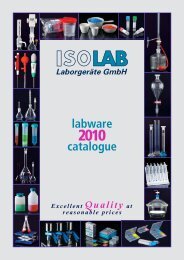
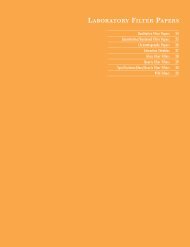
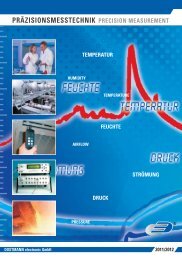
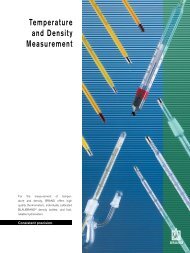
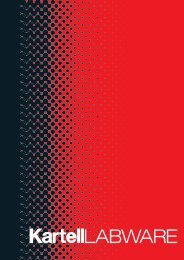

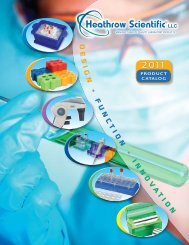


![Download [12.5MB] - Labtek](https://img.yumpu.com/24756492/1/184x260/download-125mb-labtek.jpg?quality=85)
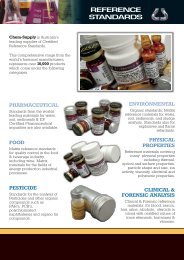
![DYMO Healthcare Brochure [2MB] - Labtek](https://img.yumpu.com/24756484/1/190x240/dymo-healthcare-brochure-2mb-labtek.jpg?quality=85)
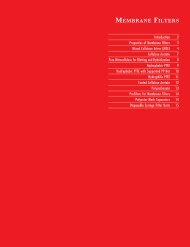
![Download [12.5MB] - Labtek](https://img.yumpu.com/24756470/1/184x260/download-125mb-labtek.jpg?quality=85)